#XF 18mm
Explore tagged Tumblr posts
Text
It's time

View On WordPress
#black and white#black and white photography#documentary#fuji#fujifilm#fujifilm x-pro3#fujinon xf 18mm f2#fujixseries#monochrome#street#street photography
2 notes
·
View notes
Text
OpticalLimits' Klaus Schroiff Reviews Viltrox AF 27mm f/1.2 XF Pro & Rates it as "Highly Recommended"
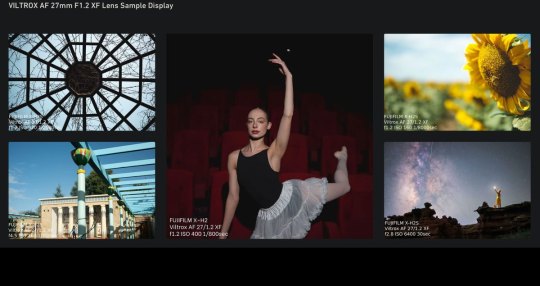
View On WordPress
#Fujifilm Fujinon XF 18mm f/1.4 R LM WR#Fujifilm Fujinon XF 18mm f/2.0 R#Fujifilm Fujinon XF 27mm f/2.8 R#Fujifilm Fujinon XF 27mm f/2.8 R WR#Klaus Schroiff#OpticalLimits#Sydney#Viltrox AF 27mm f/1.2 XF Pro#Viltrox AF 75mm f/1.2 XF Pro
0 notes
Text
I went Full-Fuji! (GFX One Year Review)
One year ago, I decided to ditch my Nikon DSLRs for a Fujifilm GFX 50R.
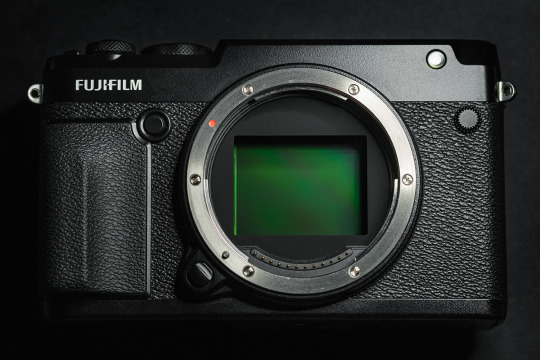
The GFX's sensor is larger than a full-frame sensor with a crop factor of 0.79
A little over a year ago, I still was using a few Nikon DSLRs to do just about anything. For portraits and landscape, I had a very respectable D810. Enough megapixels to provide some room for cropping and a decent dynamic range for most situations. For action and hobby-wildlife I had a D500. A durable mini-tank with performance that to this day would be hard to dismiss even in the light of mirrorless flagship innovation.
However, the question of my camera-future slowly crept into my mind. Was it time to change and upgrade into the Nikon Z system? Switching to a Z7 would indeed have been a sensible move, adapting older lenses while getting the sensor of the D850 in a smaller, cheaper body with an ecosystem of native lenses with the optical quality up to specs for the next decade. On paper and elsewhere, it should have been the obvious choice. Yet my answer to this question was a resounding "no" and I went against reason to set my sights on a Fujifilm GFX 50R. I took that model over the S because I enjoy the rangefinder form factor.
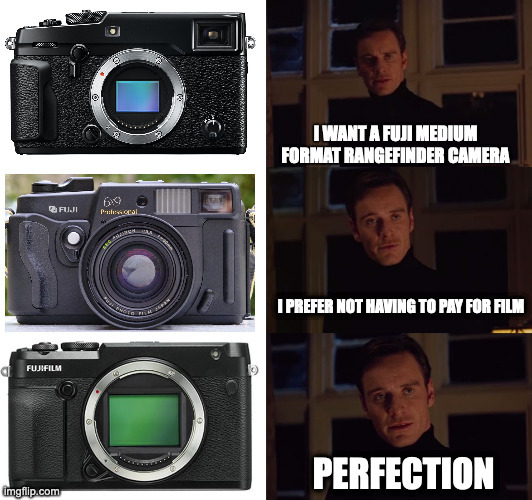
In hindsight, the smartest of all moves would probably have been to remain with what I had, adhering to the ancient photographic wisdom: "lenses are more important than cameras". My kits could have kept me satisfied for probably another 10 years if we are being honest. I could have stayed within the F mount ecosystem and could have taken advantage of its downright insane price drops to get top-of-the-line lenses for peanuts instead of selling the farm on a whim, however carefully considered it might have been.
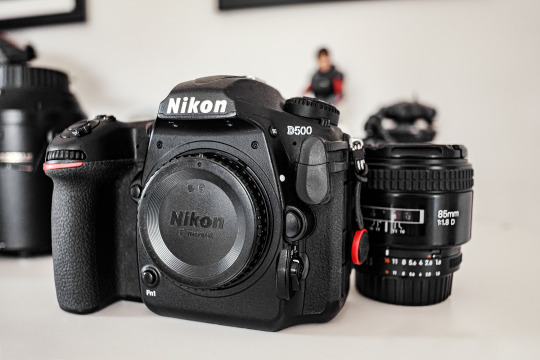
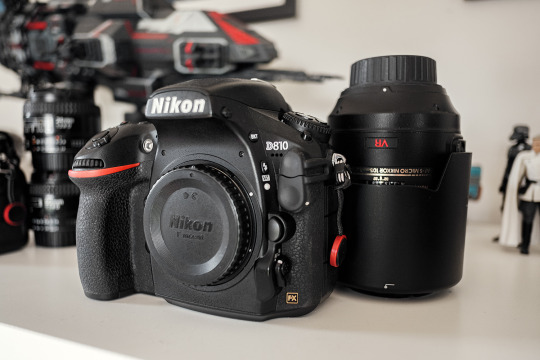
These old and trusty Nikon DSLRs got sold off to finance the 50R
The truth is that after fifteen years of walking the beaten paths camera-wise, I wanted to shake things up. I longed for a change of pace. I felt confident enough in my practice to know what type of photography I would want to engage in for the foreseeable future. I also felt confident enough that I'd be able to answer the call of the occasional assignment using a camera system that would have a non-negligible amount of drawbacks. The challenge even seemed like a fun new variable to add to contracts. Thus, the choice I made for my photographic future has been one born out of love rather than made from a place of reason.
When I think of good photographic memories involving the process — how photography is approached with mind and body — I immediately have two very different ideas jumping to mind and each has an ideal type of tool that best suits it. Neither of these are about efficiency. Neither of these are about performance beside niche-performance, perhaps. But that, is more of an acquired taste and it also comes at a price, but we'll see about that later.
The first idea is an instinctive and spontaneous approach, form of feral and visceral active meditation, akin to Daido's rabid dog method; roaming the streets clear of thoughts and letting the subconscious take the helm. Shooting, shooting, shooting and discovering everything later. No plan, only image-taking. No clear framing, no image-reviewing, no judgement to pass, no threads to weave. Only arrange and make sense later, if there's any of that to find.
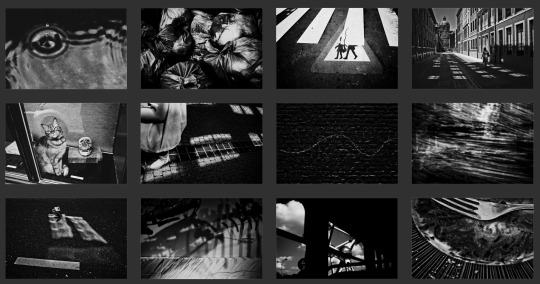
Results using the "rabid dog" method, using a Fujifilm X100, 2014
For this type of photography, the Fujifilm X100 was the tool that instantly clicked with me. The "poorman's Leica" is an apt way to describe what the X100 represented when it came out. I got the original 12mp camera in 2012 as a fun but capable toy to bring along my Nikon D700, until the shutter release button (which also is the on/off switch) broke off in 2020 after one power-up too many. I have since replaced it with a Fuji X-Pro 2 with the XF 18mm F2, 27mm F2.8 and 50mm F2 lenses. To this day, such small Fuji bodies are my tool of choice for this kind of photographic mood (and of course, for family pictures).

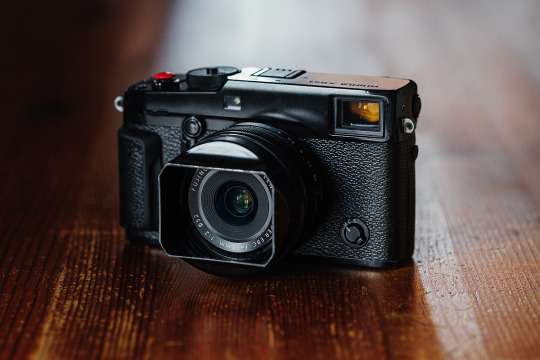
Fuji X100 later replaced by the X-Pro 2 as street photography go-to.
The second photographic process that I tend to naturally gravitate towards stems from my first year of photography school, during which all projects had to be done using film and would have us deal with the whole process (that is to say; shooting, developing, printing, framing, and displaying our work ourselves). It is with nostalgia that I look upon the memories from that time.
There sure is something inherently different in figuring out what to do with the exposures one has left on their film than being able to inconsequentially shoot within two hours three thousand pictures through which you can almost immediately browse. The latter is of course more practical and a welcome technological improvement, but the former brings an unhurried and deliberate focus that I find both refreshing and appealing.
When I think of my strongest recollection of touching the quintessence of the analog experience, the days of using my Mamiya 645 immediately come to mind. Such sluggish, heavy-as-a-couple-bricks box-machines compel one to being careful and purposeful every step of the way. I need that too.
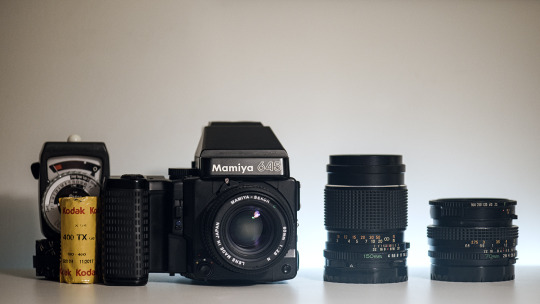
Mamiya 645 Super, since sold to finance GF lenses.
I have for the longest of time considered getting a more serious medium format camera but some quick-math with the price of film, chemicals and photographic paper made me realize that digital medium format was actually much more worth the investment while most definitely retaining some of the core characteristics of its analog counterparts. My love for the film process couldn't hold up against all the advantages of going digital, especially when buying second-hand.
Using medium format always felt like journeying inwards. It has allowed me to spend long hours in daydreaming-states paradoxically laced with an acute awareness of my surroundings. When thinking about medium format, I can recall the soul-washing quality of some of the winds that swept my cheeks while I was standing next to the tripod waiting for the exposure of the 50iso film to finish.
States of contemplation. Another kind of active meditation?
Of course, any camera can provide this type of feeling, but of all of the digital cameras available, medium format is the one type that will weigh you down the most and dictate the pace you work at.
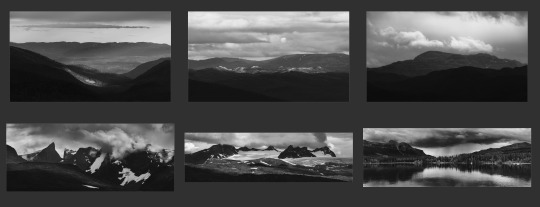
Telepanoramas created with the Fujifilm GFX 50R
Notice how these two ideas are almost the ends of a spectrum?
The first one is nervous and agitated, highly reactive, while the other is composed, meticulous and invites introspective fugue-states, yet they both share one vital element in the way that I approach them in that they take the practical considerations out of the picture to leave more space for what is going on within me.
The setting up of the camera or lack thereof becomes an excuse for something else. Maybe it isn't a surprise, that my adhd-ridden brain experiences this inexorable attraction for both these approaches. For they are in essence, two sides of the same coin, with each side matching different, specific and fluctuating needs.
Let's dive in!
After selling my DSLRs, I started looking for a good second-hand candidate. After a month or so, I found a barely used GFX 50R sold with a 50mm 3.5, a couple additional batteries and an L-bracket to boot. The price was rather attractive for the bundle, so it seemed like the time to take the leap. After a short but excruciating wait for the package to arrive, I finally was able to join the larger-than-35mm-sensor club.
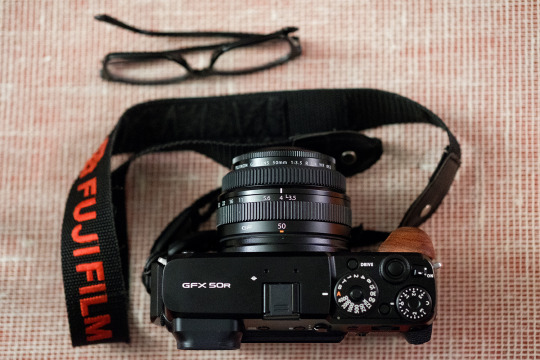
How it started
My first few months with the camera had me immediately blown away by the difference in output. The higher resolution and the sensor's qualities made the (very much existing) noise hardly noticeable when downsized to small printing or screen-viewing sizes. What also immediately struck me, was the looks of the images the camera produced. Images taken with the GFX feel more "3D" to me. It is a very peculiar and hard to describe feeling. I suspect it is a combination of factors; the depth of field of the larger sensor and the very smooth transitions between what's in focus and what is not that it permits, the colour depth, and the quality of the optics. I've seen many Youtube reviews, read forum threads or been in discussions on Discord about GFX cameras where people (who more often than not don't own one) will maintain that these qualities don't exist at all. After a year in the system I can confidently state that they're wrong.
I can't really put my finger on what causes these differences as I am not as tech-savvy as I could be, but it is still clear as day. To use a pretty apt analogy, I would say that the difference between full-frame and (crop) medium format is akin to the difference between aps-c and full-frame cameras. Are they deal-breaking? Not necessarily. For some people they can be. Are they noticeable? Definitely. It is especially funny to me to see medium format cameras being dismissed by such a many full-frame shooter who at the same time, is constantly bashing aps-c sensors.

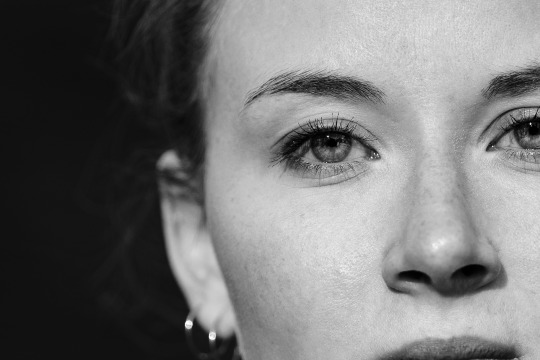
Don't you love to pixel-peep? Omnomnom (imagine with 102mp!)
This being said, I will always fully stand by the statement that full-frame cameras are the more sensible choice as they are better all-rounders by design. High-res cameras like Sony's A7RV or equivalent are also better high-iso performers than the aging IMX161 sensor that the GFX 50 series uses, which sees its operational limit at around 6400iso (but the GFX 100 would be another matter entirely). A top-tier full-frame camera is evidently more practical, lighter and cheaper without any deal-breaking image quality difference to what the medium format niche can offer. When all costs are factored in, the choice would seem self-evident. If you consider medium format, it should be understood that you know this before committing to any bigboy sensor. Or don't heed this and make people who buy second hand happy, as GFX gear loses almost one third of its value once it hits the second hand market (a consequence of too many people jumping on the medium format bandwagon only to realise — way too late — that it wasn't for them).
Are we cooking yet?
I need to talk about the GFX's files for a little bit; I'm a raw shooter only — which hopefully you'd have guessed — (in my opinion anyone buying into a medium format to shoot jpeg must have cognitive issues or too much money, or possibly both) and I have to say that when I opened the raw files to give the sliders their very first +100/-100 or +3/+4 EV from base iso (or any combination of these) I was utterly floored by how well the files could handle such an ungodly beating.

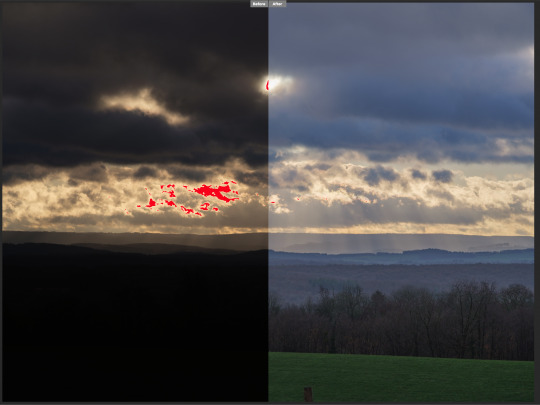
This isn't a joke, I promise.
This type of camera makes the slider memes come true, to a point where for the first few months, my ability to edit properly was severely impaired by the glee I experienced while pushing everything way too far. I believe it is not an uncommon symptom at the start of a medium format journey. It takes a while to come back from that and simply be able to tell yourself "ok here, maybe less dynamic range would be a good edit". I'm getting better at this as I consciously try to avoid overcooking.
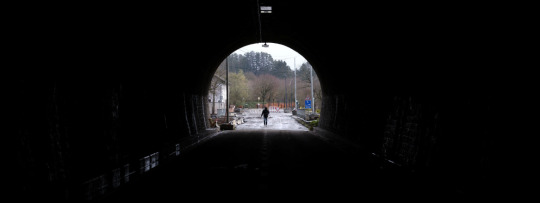
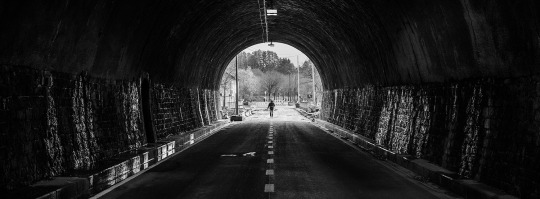
Clean recovery? Can do!
On the image-taking side of things, the major change for me with regards to file-handling is that I'm almost systematically exposing for highlights now. Adding 3EV and boosting shadows in post when shooting at low iso is inconsequential in terms of image quality as there won't be any visible noise whatsoever on the output, unlike my aps-c cameras that will show noise even at base iso. Similarly to many other aspects medium format manages well, this is something I got used to very quickly.
To adapt or to not adapt, that was the question, here's my answer:
At first, I tried adapting my old Mamiya 645 lenses to the 50R. It was useful in the sense that it allowed me to enjoy different fields of view at no cost but it quickly felt like a plaster on a wooden leg. I'm not someone who enjoys the manual focusing as a default and I've grown more and more intolerant of the optical flaws of older lenses as time went by. I realised that it wasn't a viable long term solution for me and quickly chose to sell all my Mamiya cameras and lenses to finance native glass for the GFX.
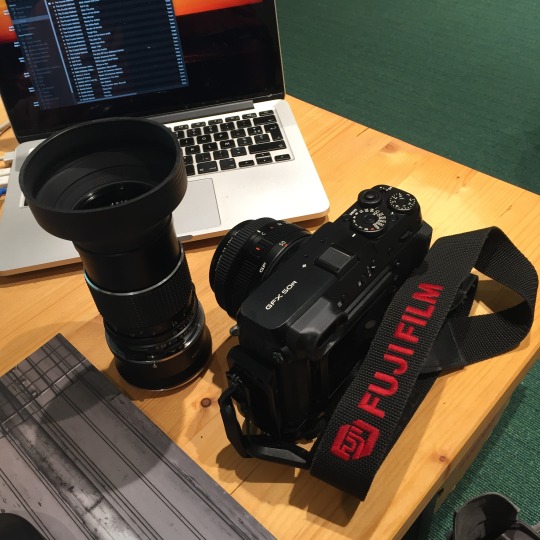
My experience adapting? It was alright but not at all ideal.
Which lenses then?
Getting into the GFX system I promised myself I would make no compromise whatsoever on optical quality and directly aimed for the 250mm F4 (mainly for tele-landscapes) and 110mm F2 (mainly for portraits). The grind felt long but it really wasn't, as I managed to secure both lenses from the second hand market within 6 months. It is only later that I added the 35-70mm "kit" lens to my arsenal to fill the wide-angle gap I had. As I seldom feel the need to shoot wider than short-tele fields of views, this is more of a lens of convenience.
The difference between adapting older lenses and using native glass was night and day to me. Two things made this the better choice in my view: first, I've been actively seeking the "clinical" quality of modern optics. I do not care much for the "character" of older lenses especially not if the word is used to help one overlook a lens' unforgivable flaws. Second, while there sure are lenses worth adapting out there, this come at a cost for the adapting to be worth it (the cost of an AF-capable adapter and of course the cost of the lenses themselves) which I saw as a waste of my limited resources. I told myself I wasn't going to make compromises, remember?
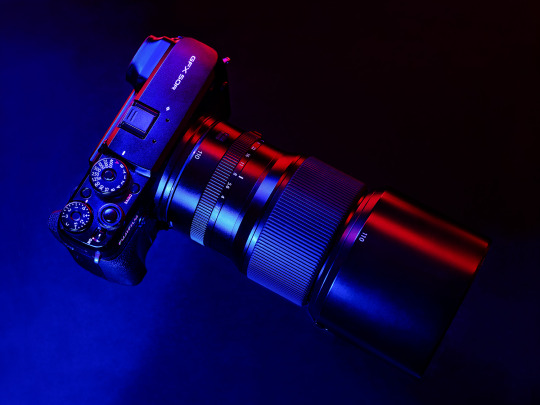
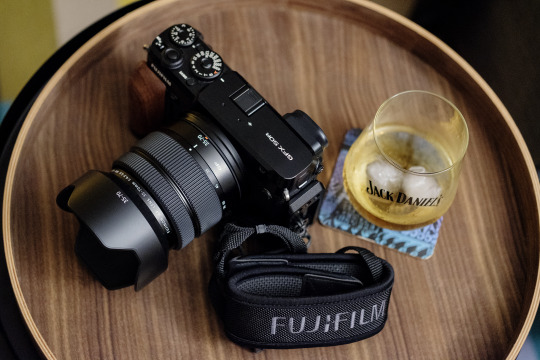
One year after switching, I am now knee-deep into the system, having sold most of my Nikon gear as well as my Mamiya medium format film-cameras to acquire some of the incredibly hard to resist GF lenses.
After a year of transforming a heap of dormant gear and side-gig revenue into new lenses, I also noticed that the representation I had about the worth of money also changed radically when gear was concerned.
A little over a year ago, an XF lens priced 800€ definitely seemed like a steep investment I'd try to find alternative choices for. Nowadays, 800€ is a mere budget lens in my mind. Seeing the price tags of GF lenses doesn't make my head spin anymore and this is somewhat worrisome for the thrifty Dutchman living in the back of my brain.
With the announcement of the 500mm F5.6 lens being in development (a focal length I definitely miss from my Nikon days, I'm a sucker for ultra-telephoto landscape photography), I fear I will manage to push my monetary boundaries further back yet, which I will help achieve by selling my X-T3 video-oriented kit.
APS-C: you're dead to me.
An unforeseen consequence of my GFX switch was that my aps-c cameras were pretty much relegated to the bottom gear drawer and seldom used barring a few notable exceptions (such as a wedding gig) where the need for its autofocusing speed was greater than the need for image and file quality.
To reuse the analogy I made earlier; my X-Pro 2 and X-T3 have become to me what a micro-four-thirds camera would be to a full-frame camera user. Getting into Fujifilm's medium format system prompted me to think about how I use my cameras and to what end. The realisation that there is a clear split in my photographic approaches I evoked at the very beginning of this article is the result of that thought process.
Although I will sell my X-T3 because it feels superfluous and I want to stop my video gigs completely, (and because my need for GFX lens money is still great), I would never part with my X-Pro 2 nor the few XF lenses that I have as they serve a totally different purpose to that of the GFX's.
Having a compact, fast, discreet yet still capable camera that can be casually put into a pocket is an advantage that I would be a fool to part with. The X-Pro is a more practical choice for street-photography, documentary in less-than-favourable conditions, as well as for family pictures, when packing a brick of a camera and two bricks worth of lenses for a walk in the park in suboptimal weather would be met with a tired roll-eye from my spouse.
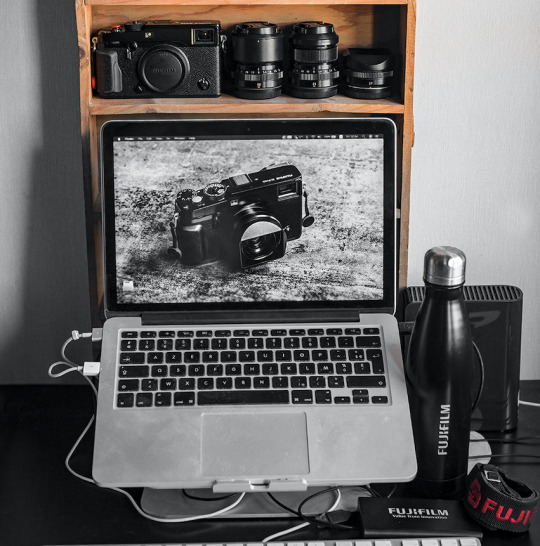
My dear X-Pro, I'm Never Ever Gonna Give You Up
Of course there have been many occasions for which I have chosen to take the challenge and went into these situations with the GFX. However, I wouldn't want the GFX to be the only option at my disposal in such cases.
For example, during the last wedding I shot, when the dining room got darker and the guests started moving around a lot (and dancing), the switch to aps-c cameras was absolutely necessary because of how difficult it was to consistently get acceptable results in poor light and with subjects making erratic movements. When you are held under a result-delivering imperative, you have to be able to honour it.
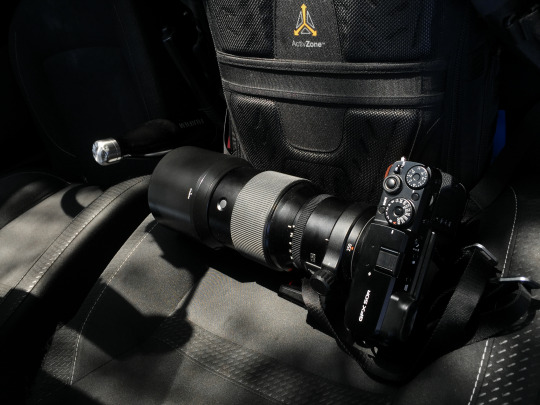
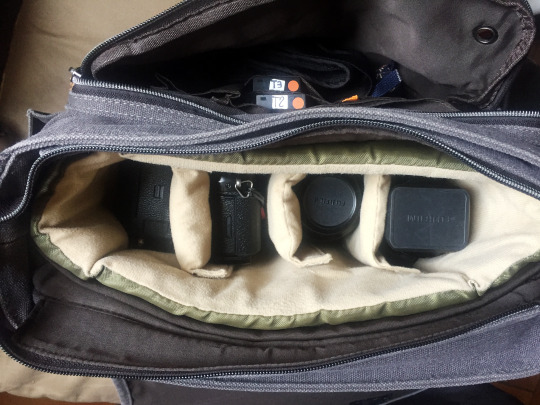
Packing a Fuji GF or Fuji X kit can be a slightly different experience
"Megapickles don't matter!"
This was an idea that I lived by just a few years ago. I changed my mind. I still believe that megapixels don't matter when you don't have them. Just like one should shoot with the camera one has / is able to afford. It doesn't matter in the grand scheme of things but all these technical niceties just make one's life more comfortable. Cropping, denoising through file reduction algorithms, or enjoying detail endlessly because one can, these are just the icing on the cake. I just happen to like my cakes with more icing than cake now.
Regarding resolution specifically, it's been another area in which there seems to be no possible coming back. Nowadays, every time a manufacturer announces a new camera and I discover they plan to fit it with a 24MP sensor I dismiss the information entirely. It doesn't register anymore. 32-36 is the new 24 in my mind now and it's sometimes difficult to come back from those expectations.
This being said I have no issue using lower resolution aps-c that I own and could perhaps even have fun with a X-Pro 1 because then the output quality wouldn't be my prime concern. It is only concerning new releases that my interest dips firmly for "low" MP cameras.
Did I tell you that medium format AF sucks?
Before I conclude this one-year review, let me hammer this point in with a two-handed mace; it can't be understated, especially for the GFX 50 series which uses contrast detection — the autofocus will throw you back to the early 2000s. Be ready to be stuck on single point, single AF mode because that's the only thing that will be consistent enough.
Then let's not forget other factors that add to the bad and make it worse; the shutter lag is half a second, the sensor readout speed is 1/4th of a second, and the time the shutter takes to clear the large sensor in combination with the camera's high resolution means you'll need higher shutter speeds in order to get rid of motion blur when shooting handheld (count about one stop faster than usual). Those would be valid reasons as to why a less niche camera system makes more sense for a lot of people.
The final comment:
Despite its sometimes dramatic drawbacks, I definitely have found the pleasure I sought when I originated this system switch. The change and the adapting my process is engaging and makes me think more about what I do, what I use, when and why. This is a win on its own.
All in all I feel like I am still at the very start of my journey though I've had the opportunity to test my GFX 50R in a wide array of situations in the past year (portrait, landscape, documentary) it seems like the way forward is clear and also opened for plunging deeper into this incredibly fun (but needlessly expensive) rabbit hole.
The upcoming 500mm, the prospect of finding an original GFX 100 (with its weirdly appealing tiltable EVF) are ideas that will — for the foreseeable future — definitely keep pulling me back in (and emptying my pockets).
Fun! Fun! Fun!
8 notes
·
View notes
Text
60101100829 60101100837 R002041 R002042 air filter LONKING

60101100829 60101100837 R002041 R002042 air filter LONKING


14400803 DH607-天窗玻璃 4120010445 外翼板 4041003161 锁柱 29290027271 后车架 4190000536441 支架 F612600113195 喷油泵612601080618 26330042661 至斗杆缸大腔中间钢管总成 28251000611 橡胶板LGB332-A200*60*6 3110900759 压盘摩擦片总成7T 26030002591 清洗机密封圈 16 29160009391 塔式平衡器 EW ? 9-15kg 4030000817 板228*115 11220338 泵轮-2A LG6618000070 右前挡泥瓦 29190016281 电力猫适配器 TP-Link TL-PA500 29170029391 3700kg CWT Fabrication 26290029551 燃油管 F73N6-20050 定位环A=0,80 0730.006.260 4110003124045 工作泵吸油胶管 H8-6210 转向油缸HSGL-70*40*405-790 11213535 操纵软轴 29220019321 散热器出水管 4120000089 前车架附件 4120008561 集中润滑转接线 6233000213 预热继电器线束 F11M6-53012 套筒 霹雳马18mm 63825018 1/2 41900021230017 辅助联阀片NMX182-A23 28290007451 PUR海绵20 29330086801 TRIM 4190015638 销轴 29270012661 连杆机构 29240011871 门板 11217247 K3V112液压泵包 11211794 横梁 26330016521 涡轮增压器螺栓 29240036281 台架线束 29420003641 水泵上盖 KDB80-50 28120005441 支板 4120016411014 停用-卡簧202574 29330021161 可弯式磁性捡拾器世达64104 4190015690 飞轮壳端盖 29170083261 锥形制动盘(双速电机组合)ZDSI-0.8/7.5 5T 江阴凯橙 29120024891 弯板 29290034541 轴套24C117170 5131000116 L920/L956F/L968F随机工具包 4110000125015 链条17002533 28809024311 磁座钻(JIC-JCA3-13) 28440000481 LG956V线束总成 4120003294017 螺栓Φ55*31 ZL30.05.17-20 29330061411 953右门玻璃 4120008526 车轮螺栓H150A24109BGF2 29170030221 铁木结合箱 4110000166020 后车架 29150024761 防滑板 28410000094 扎带总成 26101005051 撑条C11BL-M8S4183+B 26030009451 前车架JF968 4110000509130 O型圈 26010004161 空压机传动齿轮13024211 4110001841152 中横梁 21909007471 安装板 28809036081 螺栓M8*16 GB/T5783 14405397-1 滑轨 26410001642 过渡接头 28070005051 直接头M27-M16 4110015164004 行星架LT130010031 4110001181 “山东临工”系列挖掘机保修手册 29370028431 空气源管理器 26120012961 双联泵CBGj2080/1010D-XF 4120002962 压花复合扳手20MM 29040009221 起动机 4013000199 盖板 LGZJ27200106091 100*3垫片 KKZW4190002628 海绵 29340060221 盘头小螺丝03054-50510 A17-6360E 管夹 LG9140000382 下铰接轴 6222000316 C型轴套Q/HL102121.5 D70*D85*43 6299000252 液压操纵总成 11225445 输入法兰 28010016701 气体接头FN-8-03 6900000769 E6250F铲斗(JE16786订单车) 11225311 管夹 29360031651 右扶手总成(含支架及螺栓) 29330009061 MOUNTING BASE; STEERING; FRONT AXLE LG2935000969 板 11225193 垫圈 26290018271 操纵箱总成 26330003631 仪表台线束 26070000981 转换开关NP2-BD33 6410006285 驻车制动总成 26241030651 电���线LGB340—35*350P1L8L12—4 4190016000 隔套-滚针轴承1701348-1100 28280010921 箱 26291004661 动臂联大腔右钢管 4041001628 摆架右联接板 LG26170012401-1 工作灯罩 FQCD-52D 内齿圈 29030031421 REAR SEAT 26240017621 BOOM 6900021671 喷油管1C020-5372-0 26360005071 平垫圈 GB/T97.1-6-200HV-Y 4110000108012 二位二通电磁阀DC24V 4110002390 O形圈GO230 29030042991 板 15402001 28010014001 水晶头 水晶头 CE-LINK5122 RJ45 100个/包 15402002 14406362 板 15402003 14619279 泰克明以色列 NO DRAWING 2618001442004 停用-燃油箱 15402005 4110016086 胶管481CA119121208-600 15402006 6373200083 压板C 6212000147 后悬置左支架1001061-20A 2617002723031 PLATE_RH FUEL TANK FRT 4120002673 十字槽沉头螺钉M5*20 020101100032 29410003321 燃油管 4130002890011 PLATE LG2618002371 破碎锤贝壳斗管路 6410007478 弹性体HYTREL 4110003425 左支撑架 6391100185 筋板 11218259 齿轮 F210W-5-BZYF 停用-空压机润滑油进油管13022734 4110000079029 主链轨节小总成1589110 4110000924026 配重毛坯-877 FDH150-7-JYLX 垫块 4110000924053 曲轴后端油封D02A-118-07+A 26241031601 易碎贴15*30 11212205 后车架 4120005798 风扇皮带 4110000367131 过滤盖板 29240040781 E6210F/E6225F挖掘机钢板工具箱模块 29100031762 支撑环3BG140 M086MWA71 电瓶线A15*150 L0560WL115A29A0 防滑垫 2110700011 风叶 29330083911 三通接头 F11214036 天窗气弹簧 29270000201 中信封 21516229 E675FS机型标识 LGM0860WA50 板 4130002320 标签15831-87462 6410008072 接头GEO20SROMDCF 6390300120 固定座 6410005077 销轴 F403508A PLATE 6420000116 中前盖板 FP930-065042 脚垫 1.45*1.4m 4110000970165 橡胶圈 M086HWD31 电磁线圈60186-12DL 6900002001 防松垫片 4110001903129 LG6210/6210E/6225E挖掘机2000h(4000h、6000h)强 6900002244 软管 4120010238001 停用-胶管 29240007001 柴油精滤滤芯FF5052 4110003492143 LG660E/665E(洋马) 1000h保养包 14883839 电流表6L2 14401584 11214296 气动球阀 29250011041 骨架油封 29370018591 P-螺栓GB5782-M18*50EpZn-8.8 29280016962 左前架 26441004621 轴卡 55 4190015599 驾驶室总成 29070020561 软轴支架焊合件LGH9330011.1 14400146 驾驶室地板 29120018461 PLATE 4110002506 液压油美孚优力威N46-ISO VG46 29090015081 润滑油管 4110016434001 齿轮463350 4110000081283 标签 4120010847 活塞密封套件 29031011291 散热器总成 28290011261 垫片 6420000315 行车制动总成 4120006704 铲斗总成BG150 4110002244036 内六角螺钉 4110002026 装载端加长动臂模块(去除件) 14404856 间隔套R909443205 9100000067 PIPE_WA 29120043121 左筋板 11211886 软管 4120000730208 膨胀阀TB0016-6 29370201891 GUSSET MEMBER; TAILGATE 28080001120041 油封 4110001005501 护板 6390903772 垫圈DZ90149346045 6299000010 挡风板 29270015171 FLANGE SCREW_M10X65 14403997 14575811 压紧螺母组件430-1003070C 14403999 29311012411 软管20411-18-06TZ/20491-16-06Z*SR1SN-06*21 14404005 6410006366 快换线束总成 14683731 洗衣粉(超能天然皂粉) 29260024743 维修盖板 11222986 行走马达 14402151 CLAMPING PLATE 29240032251 燃油回油管总成1001683698 4041003269 连接管总成-EGR阀至进气管1207020-B607/A 2905002873102 钢管 F09080 RS7220压路机操作及保养手册 28290006381 水表63CP08900 14640599 发动机进水管 11214253 网罩TH103X0307 26330023391 加油管总成 14540252 70369708 转向壳体 11225138 活塞杆总成24A010004 997446 FS732-085030F 安装板总成B 60110236 28250008601 加力泵(龙工) 60113082 26370007931 三通SPE-10 4110001903008 板 997447 4120002474 后车架线束 9751-12504 FZ0000328 散热器 26130107551 摇臂座包 14620588 29050013661 回转马达油封 997383 4120000554113 钢管 997437 26330031081 出口北美LG959(驾驶室) 17475269 ZJ27100108131 车轮总成 997412 11215157 发动机左支撑 60110026 4110002152020 转接头 世达34717 997436 6430000282 软管总成9459-04041 29150032061 CONTROL VALVE_ASSY KMX32N_B45003J 60113079 11211121 销轴LGB301-85*165*320-1A10G 60113237 LG2190901298-1 放水胶管 29270009621 右台架 26241003821 板 29241003672 原色纸箱 480*360*238 ZJ4120001087 空气滤芯 6214000119 套 15402535 软管20441-18-06TZ/20411-18-06TZ×FC686-06×7 29260000451 六角法兰面螺栓612600116643 6900019634 桥油管(右) 6900000123 停用-碗形塞25DIN443 1152710 LG2938001458 翘板开关总成 28430002711 蓄电池6-SPB-50C 4130000415103 座 29330028361 LG953N发动机罩海绵 29331006734 FRONT BAFFLE 29290009081 后桥溢流阀支架 6241000022 LG968轮胎式装载机 4110000129146 缸盖 6900021684 垫圈 11215210 铲斗 L0460W3110N03A0 管 4130000076 发动机出水胶管 14407388 支承架 29370027591 回转接头ZH0652A600 F61E7-04630 盖 1G911-5427-0 4110004495020 强力不绝缘端子压著钳 SATA 91107 Read the full article
0 notes
Photo




On Table Mountain, South Africa - 2019
#flowers#Table Mountain#south africa#2019#fleurs#flower#macro#nature#vegetal#fujifilm#Fuji#fujilove#fujixseries#fujifeed#fujixt2#xf 18mm#photo blog#photoblog#original photography blog
3 notes
·
View notes
Photo

On Table Mountain, South Africa - 2019 / Fuji xt2 + xf 18mm
#Nature#flower#flowers#marcro#2019#south africa#travel#vegetal#clair obscur#Fuji#fujifilm#fujifeed#xf 18mm#close up#original photography on tumblr#original photographers
3 notes
·
View notes
Video
Białystok by Konrad Woś
#Białystok#Podlaskie#Polska#Poland#Europa#Europe#Fujifilm#Fuji#Fuji X-T20#Fujifilm X-T20#X-T20#APS-C#X-trans#X-mount#mirrorless#bezlusterkowiec#XF 18mm#XF 18mm f2.0 R#fujinon#pancake lens#Fotografia nocna#bez statywu#night#handheld
2 notes
·
View notes
Photo



I haven’t posted in a LONG time. I’ve recently picked up my camera again and I feel good about that.
#Fujifilm X-E1#fujifilm#XF 18mm f2.0#new jersey#Palisades Interstate Park#hudson river#George Washington Bridge
9 notes
·
View notes
Text

Double Exposure
Fuji X Pro 1 using an 18mm f2 lens
J Kenny
#black and white#golden frog studio#goldenfrogstudio#photographer#photography#fuji x pro 1#fuji#john kenny#fujixseries#fuji x series#fujixpro1#fuji xf 18mm f2#fuji 18mm f/2#double exposure#landscape#black and white photography#original photography on tumblr#original photographers#england#uk#zine#zine project#ongoing#woods#trees#tumblr photography#photography project
3 notes
·
View notes
Text
DPReview TV: Fujifilm X-H2S vs Panasonic GH6 for video shooters – Commentary
DPReview TV: Fujifilm X-H2S vs Panasonic GH6 for video shooters – Commentary

View On WordPress
#Ed Lachman ASC#Edward Lachman ASC#EL Zone System#Fujifilm VG-XH Vertical Battery Grip#Fujifilm X-H2S#Fujinon 23mm f/1.4 R LM WR#Fujinon XF 14mm f/2.8 R#Fujinon XF 18-120mm f/4.0 LM PZ WR#Fujinon XF 18mm f/1.4 R LM WR#Fujinon XF 33mm f/1.4 R LM WR#manual clutch focus lenses#manual clutch focusing#OM System M.Zuiko Digital ED 20mm f/1.4 Pro#Panasonic Leica DG Vario-Summilux 10-25mm f/1.7 Aspheric#Panasonic Leica DG Vario-Summilux 25-50mm f/1.7 Aspheric#Panasonic Lumix DC-GH6#Panasonic DMW-XLR1 XLR Microphone Adapter#SmallRig#Tascam CA-XLR2d-F XLR microphone audio adapter kit for Fujifilm#video assist tools
2 notes
·
View notes
Video
TOUTÂNKHAMON par Jean-Fabien JFL Via Flickr : photoandlife.tumblr.com/
#Paris#Ville#city#street#street photography#humanist photography#JFL#photography#photo & life™#urban#urbain#FUJIFILM#FUJINON#FUJIFILM X-Pro2#FUJINON XF 18mm f/2.0 R#colors#TOUTÂNKHAMON
1 note
·
View note
Photo

“ Las Palmas De Gran Canarias “...
2 notes
·
View notes
Photo

Boats in Tobermory Isle of Mull, July 2017 https://instagram.com/p/BaZq16PhpgU/
#boats#harbour#tobermory#isle of mull#scotland#water#light#dusk#fujifilm x-e1#fujinon xf 18mm f/2#vscocam#vscox#vscoav4#my photos
21 notes
·
View notes






